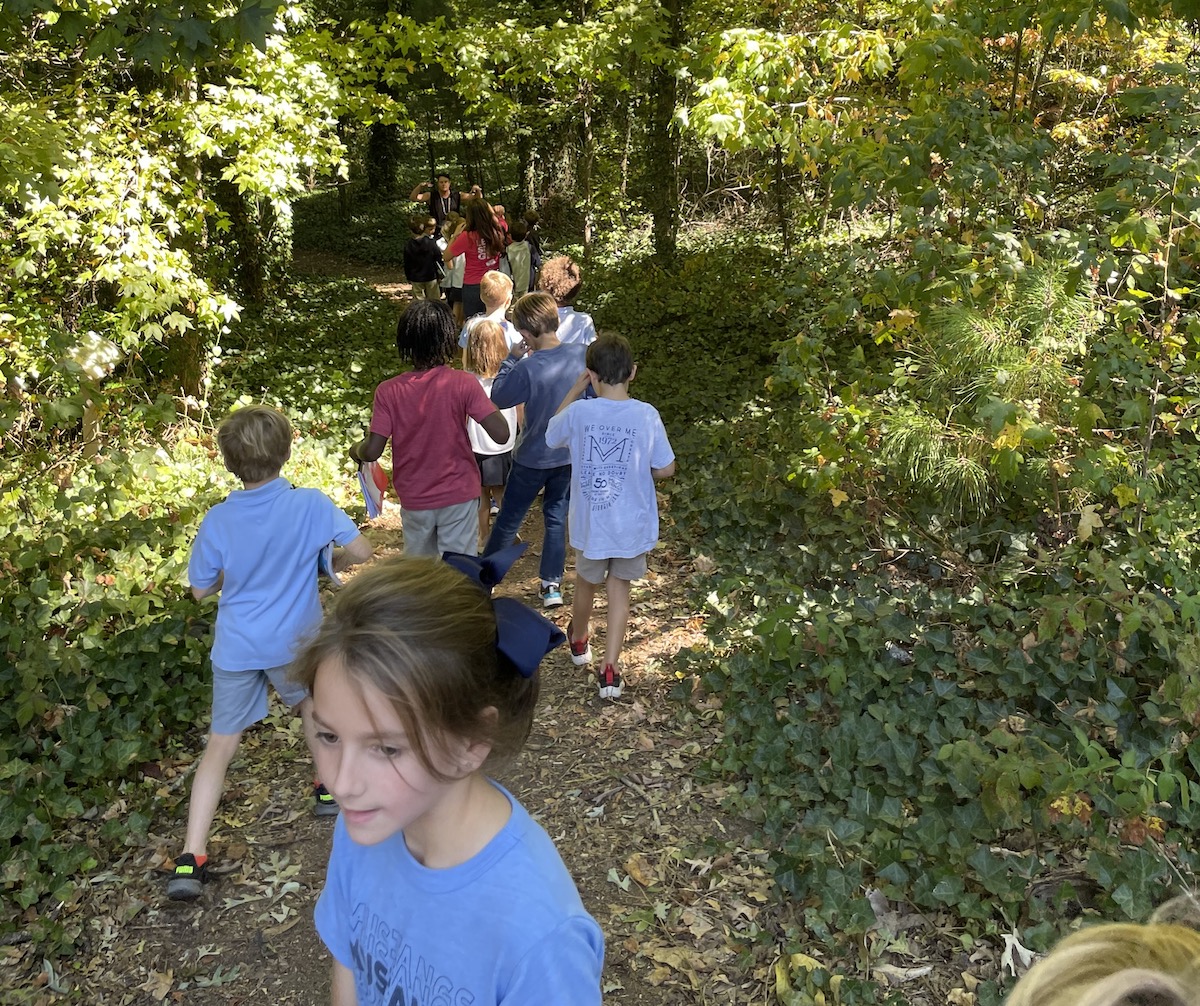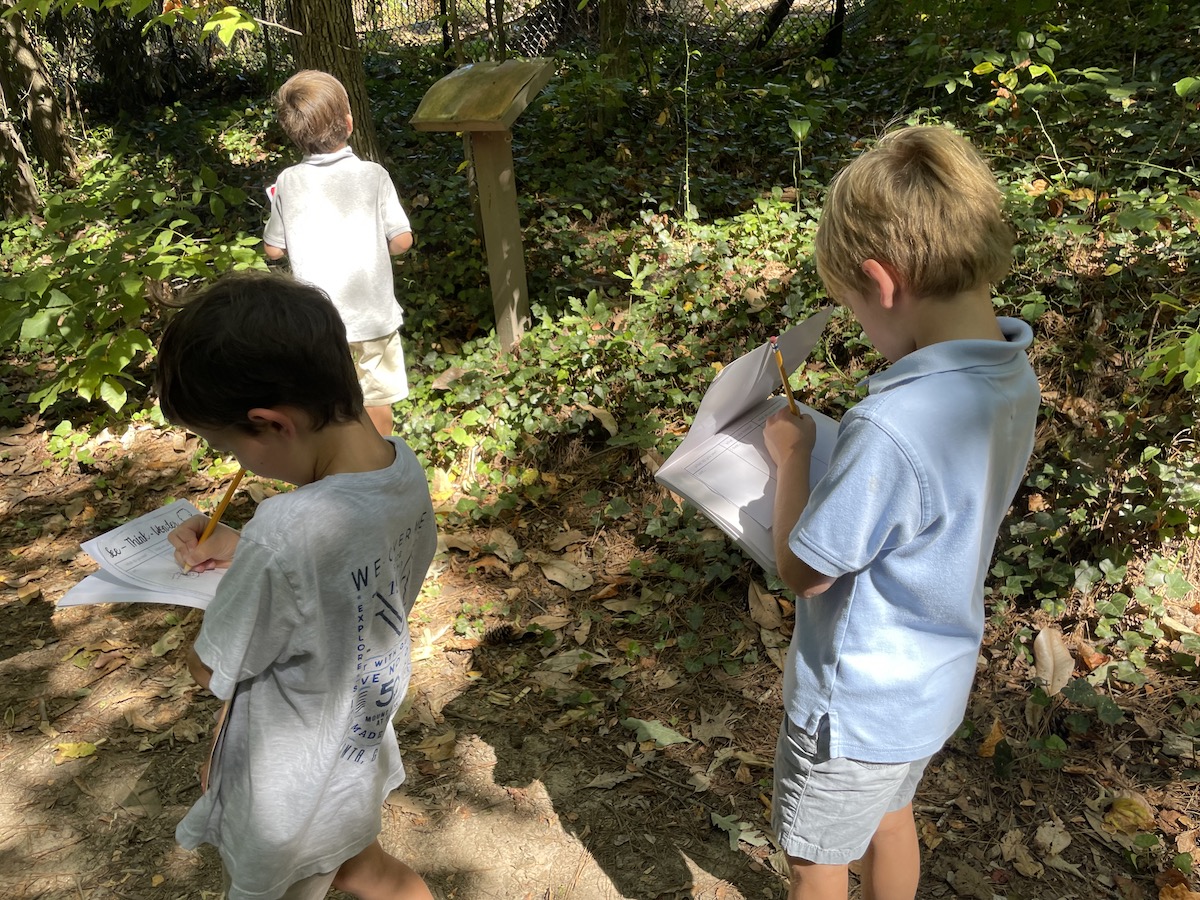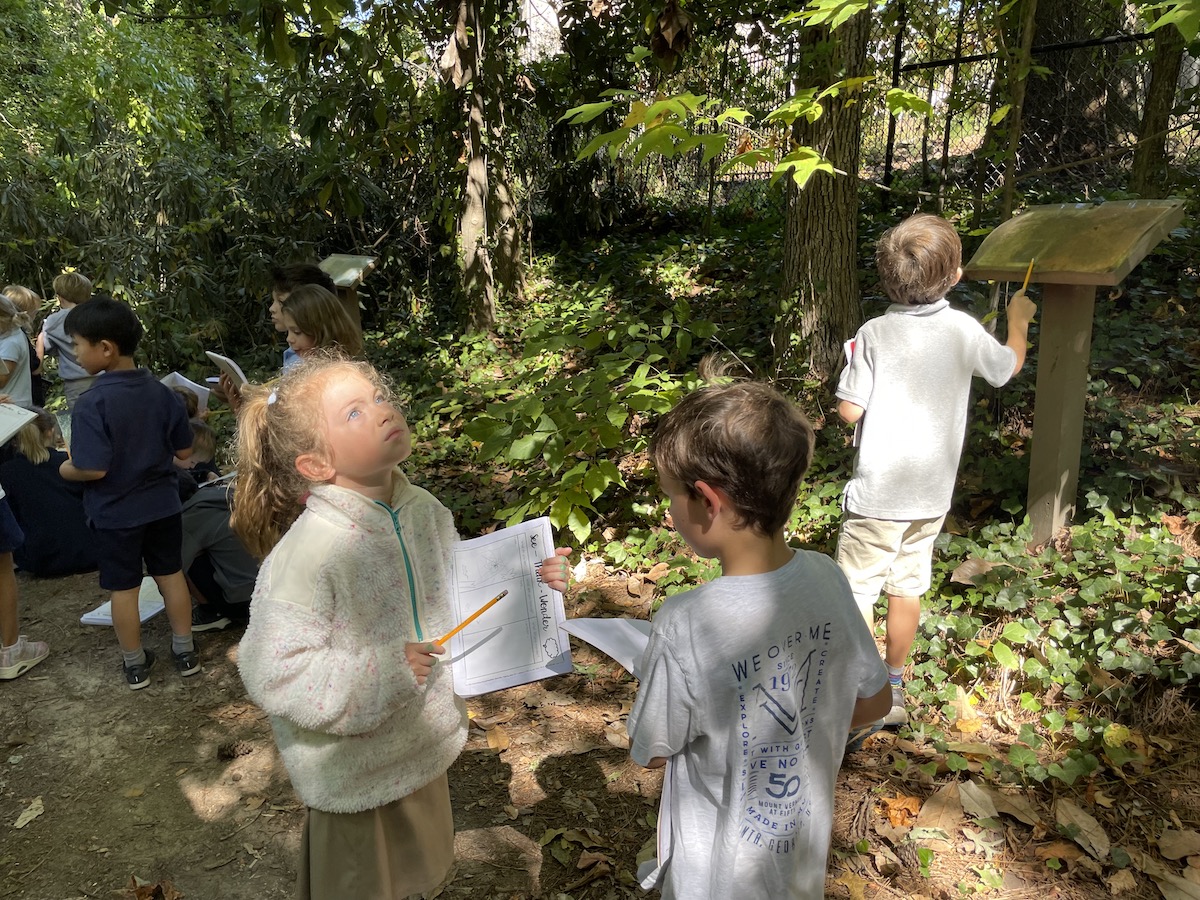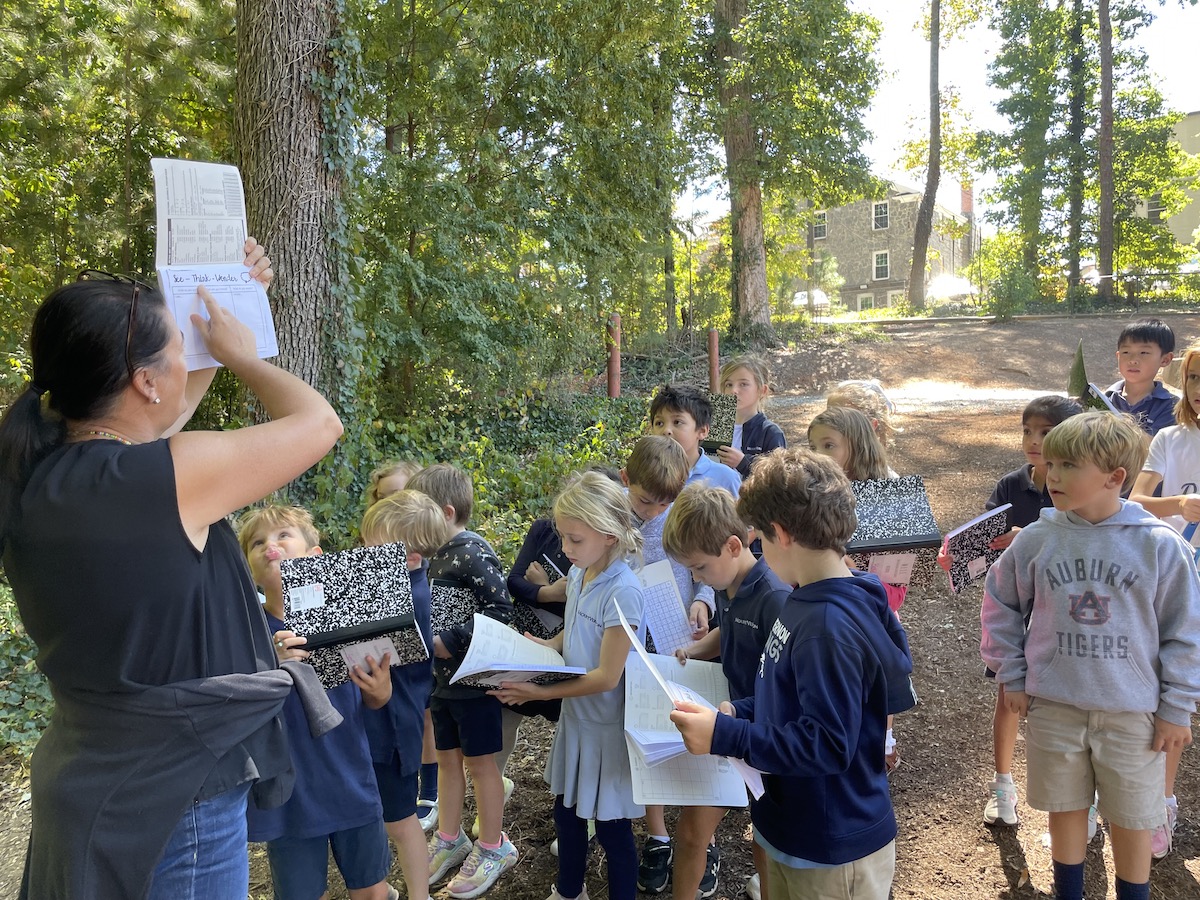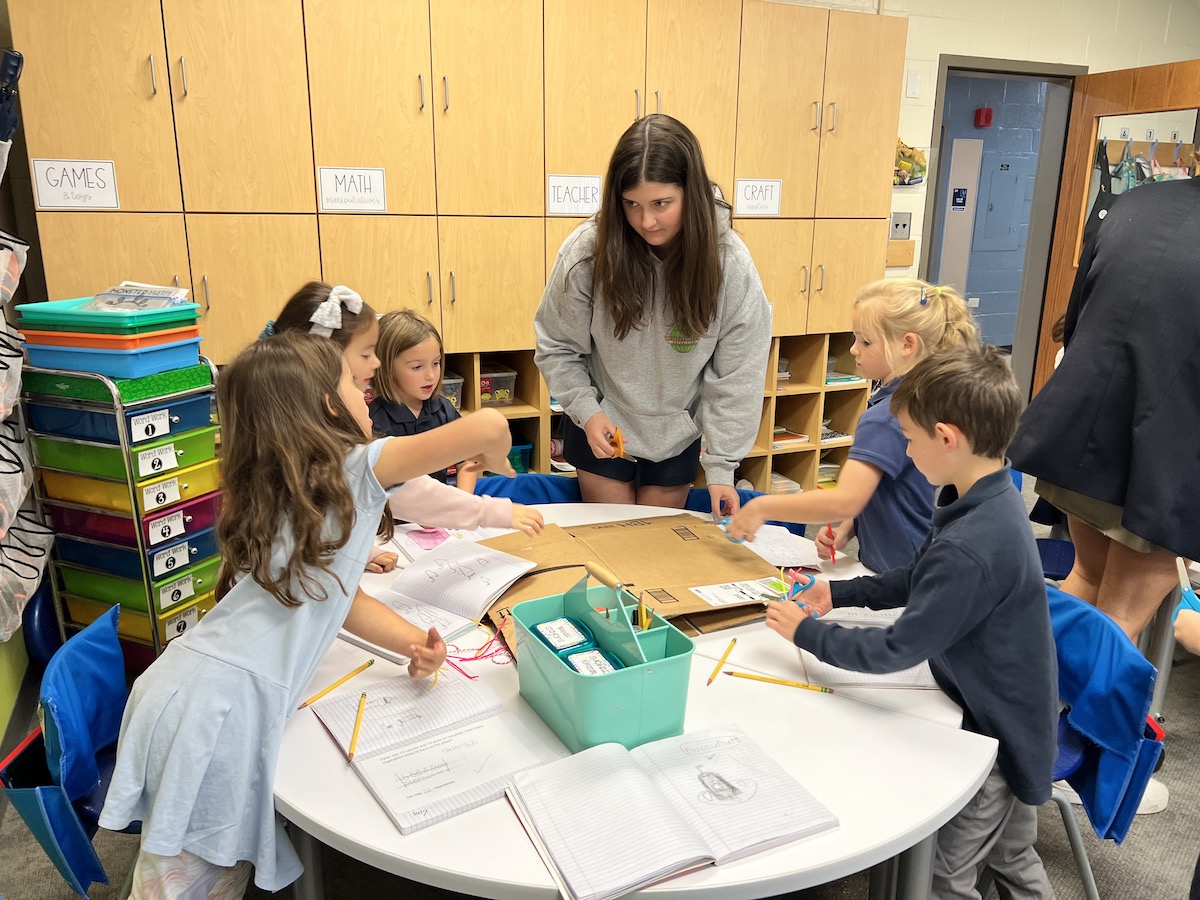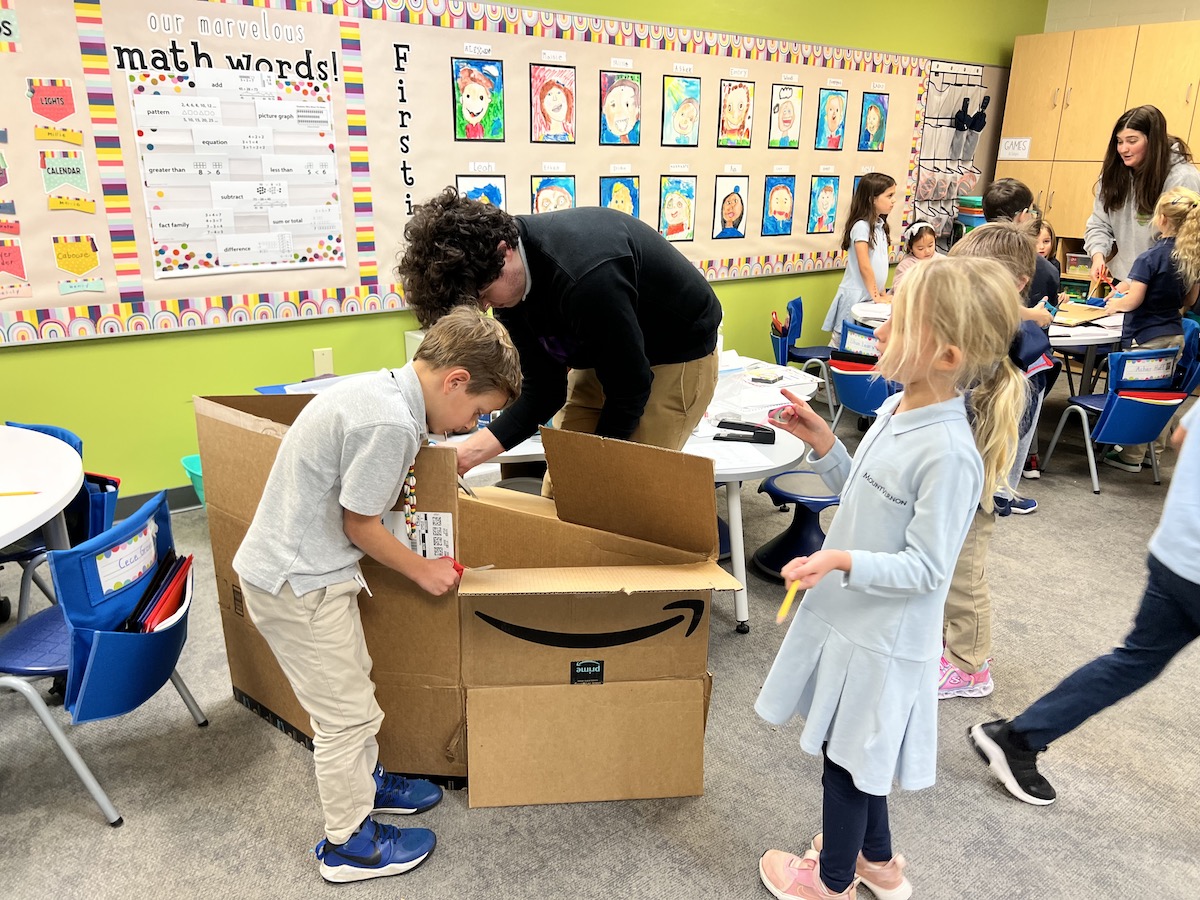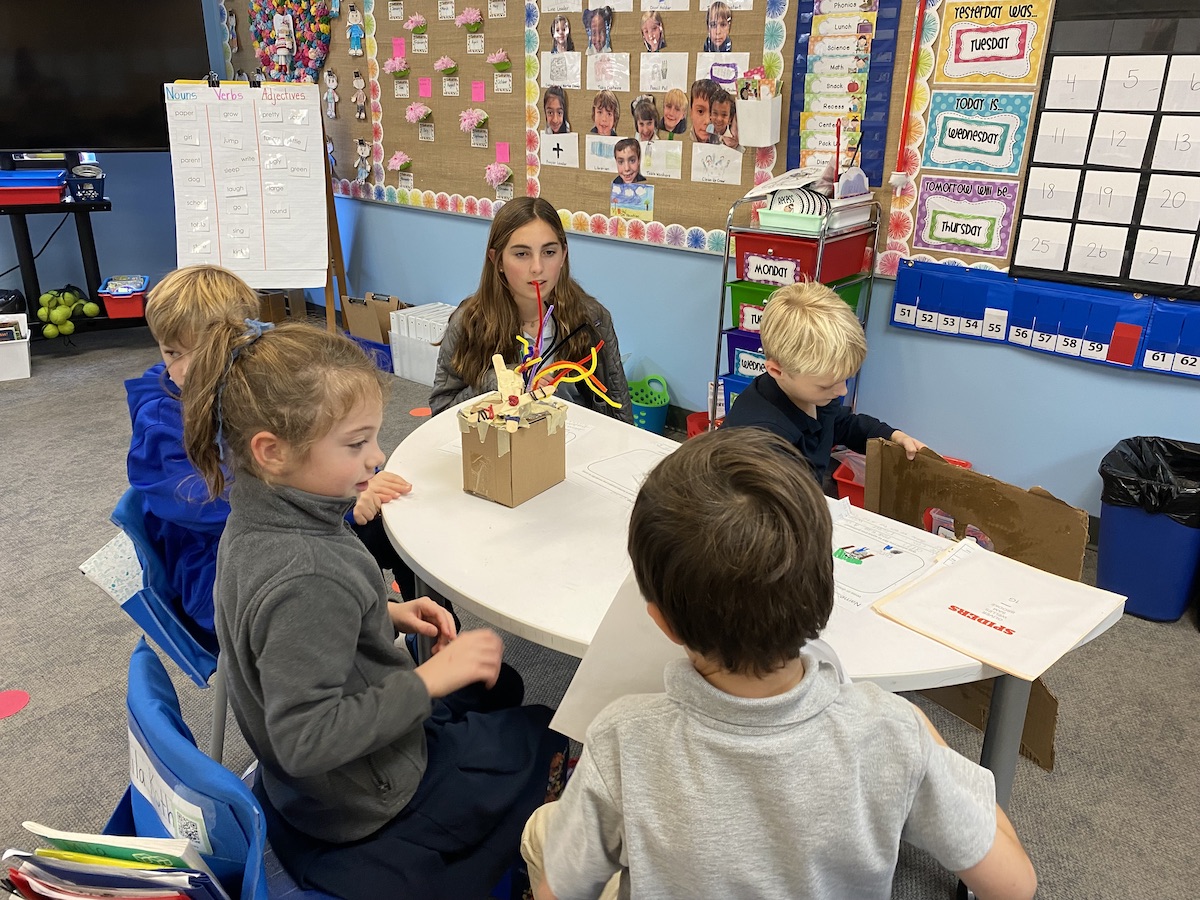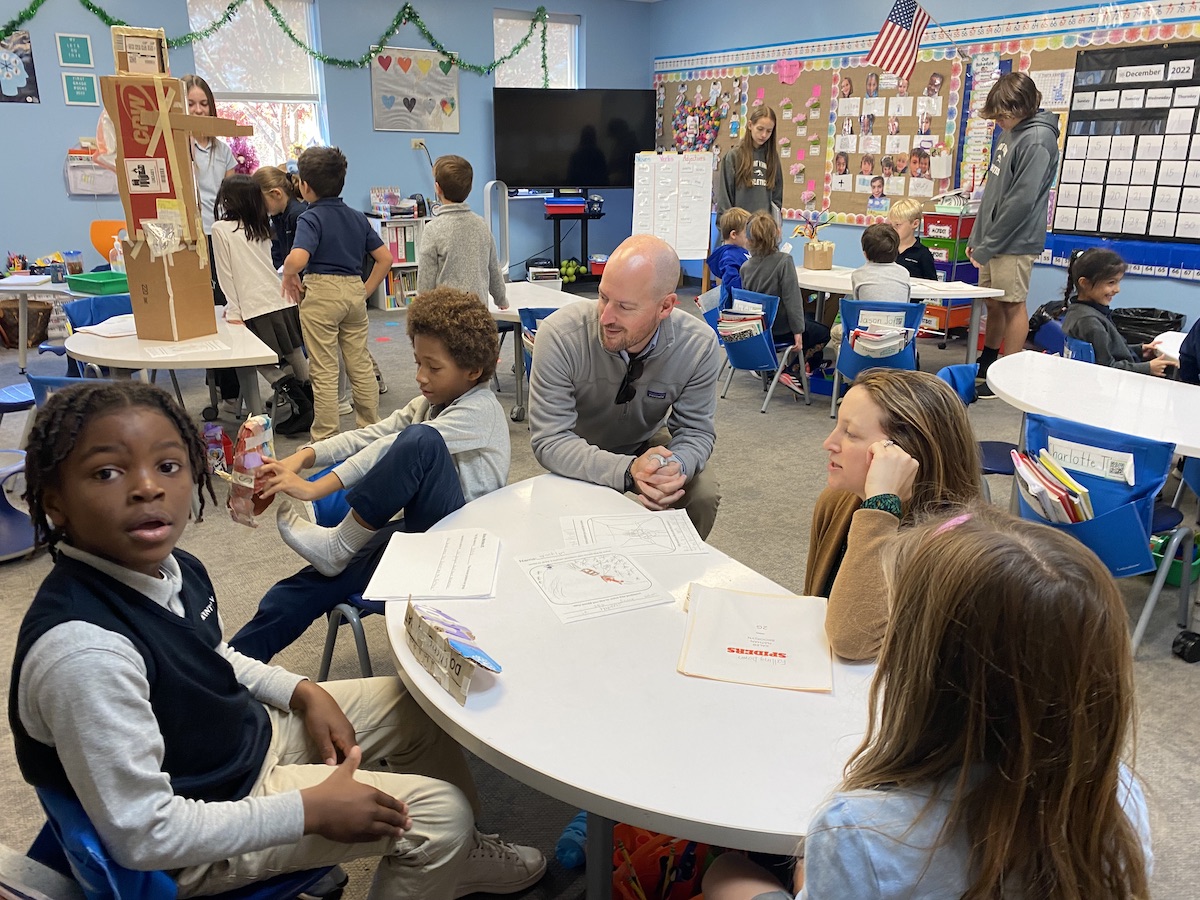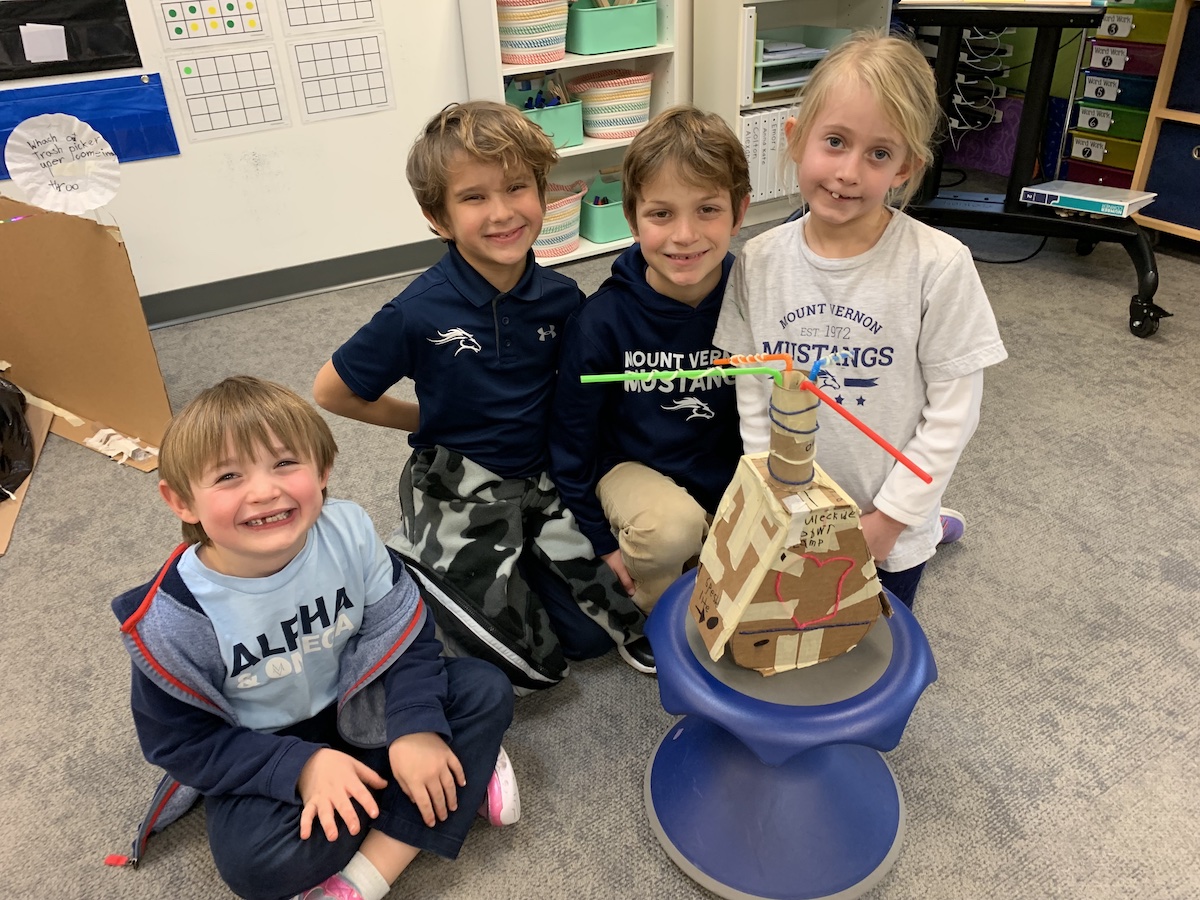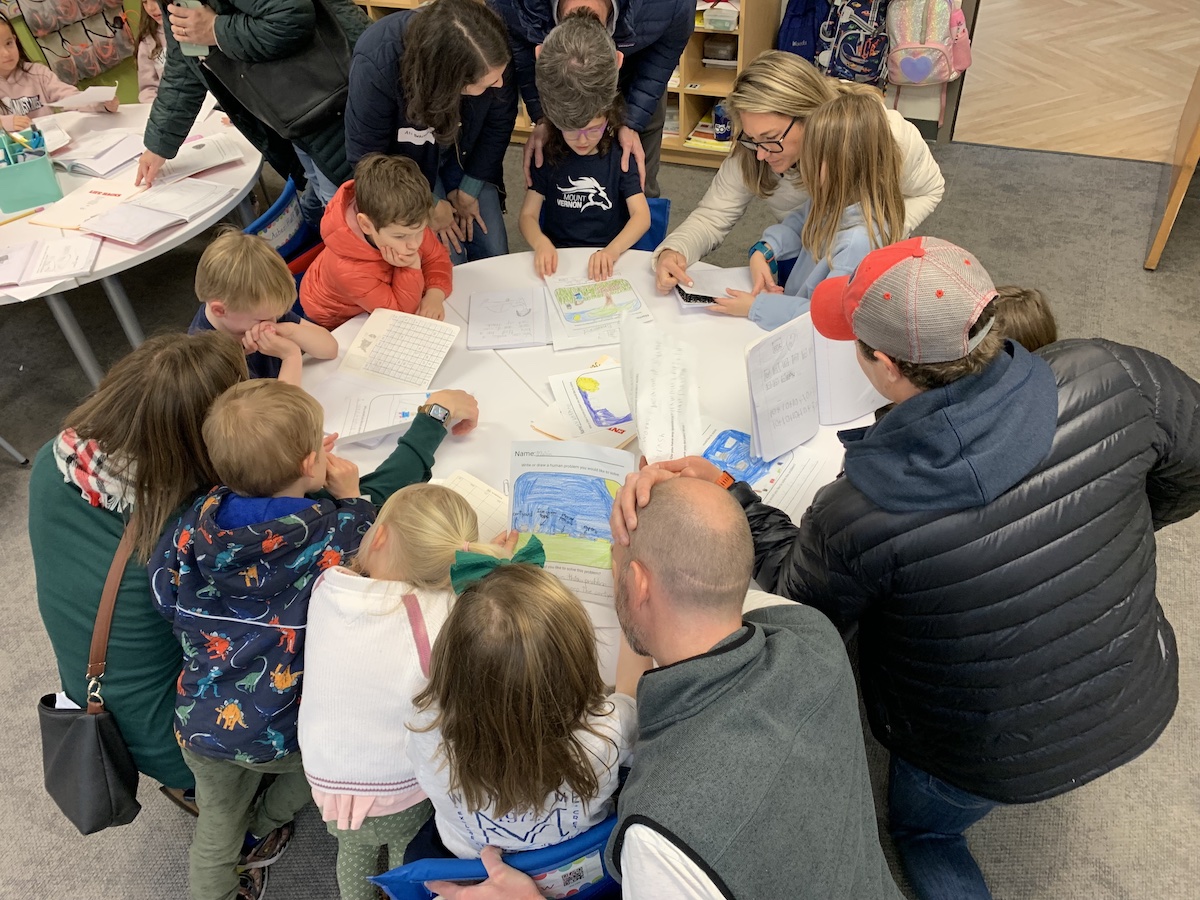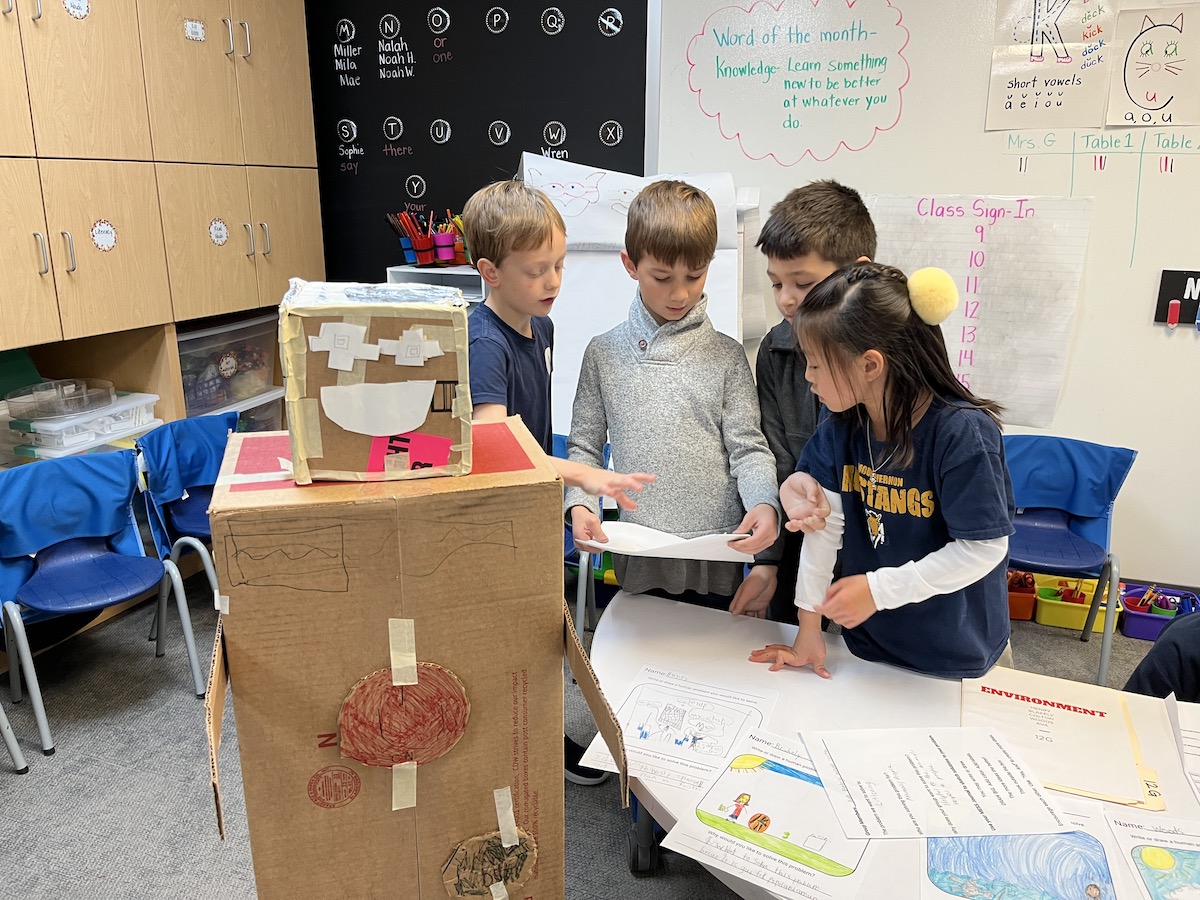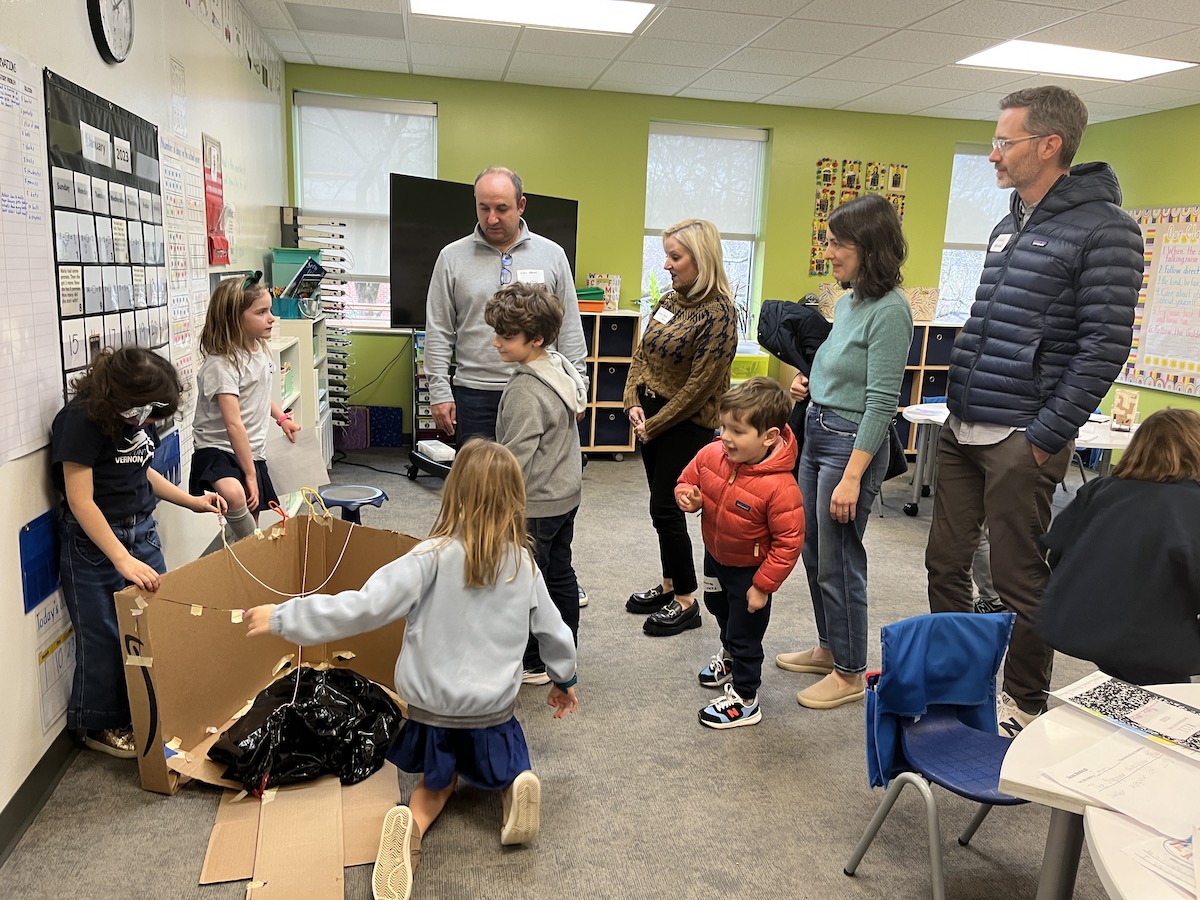Last week, Grade 1 students completed their month-long Inquiry-Based Learning (IBL) unit titled “How might we design a prototype that is inspired by observing nature and can solve a human problem?” Through their observations of nature and their research, students were able to find solutions to human problems and present their findings to an audience, further developing their communication and presentation skills.
Students began their journey by reading books such as Ada Twist, Scientist by Andrea Beatty, Shark Lady: The True Story of How Eugenie Clark Became the Ocean’s Most Fearless Scientist by Jess Keating, and The Watcher: Jane Goodall’s Life with the Chimps by Jeanette Winter. These books helped the students to understand the importance of observing nature and how it can help to find solutions to human problems.
The students then went outside to explore, observing plants and animals in nature after brainstorming ways to record their observations, including writing words or drawing pictures, taking photos, or recording sounds on their iPads. After this, they explored the survival characteristics of specific animals and plants they saw outside and developed a list of human problems they would like to solve.
Once split into groups of four or five, a single problem was determined and the students collaborated to design an invention that could solve that problem. Grade 1 invited Ms. Francher’s Upper School Innovation Diploma class to help prototype. The iD students provided feedback and helpful tips based on the knowledge they fostered over years of doing similar work. The feedback enabled their Lower School friends to design and prototype like pros.
Groups began to show similar interests and were put into rooms in which they could collaborate with other students. Home improvements, environmental issues, life hacks, and various other groups worked side by side to complete their sketches and begin the prototyping stage.
Students then used recycled cardboard, paper, tape, aluminum foil, and markers to build prototypes of their inventions. On Friday, January 13, parents and teachers came to visit Grade 1 classrooms to listen and interact with each group about their prototypes giving the students an opportunity to sharpen their communication and presentation skills. Each group planned their presentations, including ensuring each member had a part to present in a specific order. allowing each parent to see every group’s prototype.
By using feedback from this unit, Grade 1 will start their next unit titled, “How can we use light and sounds to communicate different types of feelings without words?” This cross-curricular integration unit will incorporate all connections classes including, Science, Performing Arts, Maker, Visual Arts, and Spanish as well as subjects including, Literacy and Math. While students are developing their collaboration skills they are also expanding their communication toolkit.
